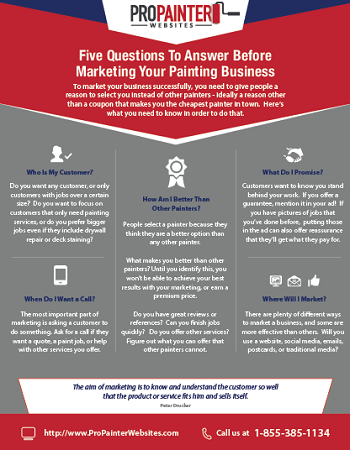Key Seasonal Considerations For Commercial Outside Painting: What You Need To Be Enlightened Concerning
Key Seasonal Considerations For Commercial Outside Painting: What You Need To Be Enlightened Concerning
Blog Article
Web Content Author-Korsholm Chaney
When you're intending a commercial exterior paint task, seasonal aspects can make or break your results. You'll intend to think about how temperature and moisture effect paint application and drying out times. Choosing the appropriate season can ensure your paint adheres appropriately and lasts longer. But which periods are really the most effective for this type of job? Let's discover the crucial elements that can impact your project's success.
The Influence of Temperature Level on Paint Application
When you're planning a business external paint project, the temperature level can significantly affect exactly how well the paint adheres and dries.
Ideally, you intend to paint when temperature levels range between 50 ° F and 85 ° F. If it's as well cold, the paint might not heal effectively, leading to issues like peeling or fracturing.
On the other hand, if it's also warm, the paint can dry out also rapidly, stopping correct bond and leading to an uneven surface.
You should likewise think about the moment of day; morning or late afternoon supplies cooler temperature levels, which can be extra favorable.
Always examine nathanson family painting for the particular paint you're making use of, as they usually offer support on the perfect temperature array for optimal outcomes.
Humidity and Its Result on Drying Times
Temperature isn't the only environmental element that influences your commercial outside painting job; humidity plays a considerable duty too. High moisture levels can decrease drying times significantly, affecting the total top quality of your paint work.
When the air is filled with dampness, the paint takes longer to heal, which can lead to issues like inadequate bond and a higher risk of mold development. If you're painting on a specifically damp day, be gotten ready for prolonged delay times in between coats.
It's important to monitor local weather and plan accordingly. Ideally, aim for moisture levels in between 40% and 70% for optimum drying.
Maintaining these factors in mind ensures your task stays on track and supplies a lasting coating.
Best Seasons for Commercial Exterior Paint Projects
What's the best season for your industrial exterior painting jobs?
Spring and early autumn are usually your best choices. During these seasons, temperature levels are light, and humidity degrees are commonly reduced, creating suitable conditions for paint application and drying out.
Stay clear of summer's intense heat, which can trigger paint to dry also swiftly, resulting in poor adhesion and coating. In a similar way, wintertime's cold temperatures can hinder correct drying and treating, running the risk of the durability of your paint work.
Aim for days with temperatures between 50 ° F and 85 ° F for optimal results. Remember to check the regional weather report for rain, as damp conditions can ruin your project.
Planning around these aspects guarantees your painting project runs efficiently and lasts much longer.
Conclusion
Finally, planning your commercial exterior painting jobs around seasonal factors to consider can make a considerable difference in the end result. By organizing job during the suitable temperature levels and moisture levels, you'll guarantee much better adhesion and drying times. Keep in find out this here to keep an eye on local weather prediction and choose the correct time of year-- spring and very early autumn are your best bets. Taking these steps will certainly aid you attain a durable and professional finish that lasts.
